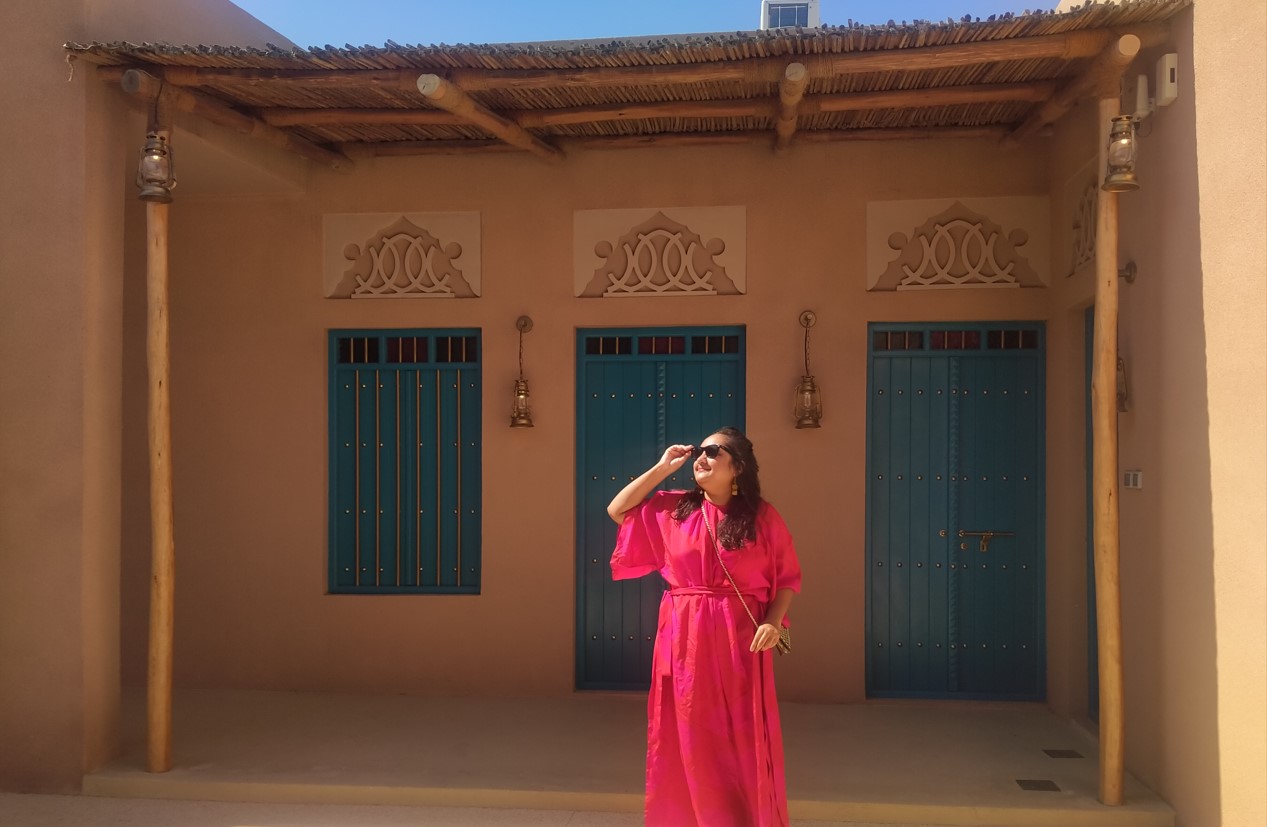In the Emirate of Sharjah exists the less explored white sand beaches and coral reefs in the unique port town of Khor Fakkan facing the Gulf of Oman. A popular spot among tourists of UAE, this little coastal town is known for its amazing resorts, hiking trails, waterfalls, lush mangroves, and wildlife conservation parks. Situated about 20 kilometers south of the city of Fujairah, a stopover in this port city is ideal for tourists interested in outdoor adventures and exploration.
Known for its beautiful beaches, clear waters, and scenic mountain views, the city is home to several attractions, including the Khor Fakkan Beach, the Al Wurrayah Falls, the Khor Fakkan Fort, and the Khor Fakkan Heritage Area. It is also a popular spot for water sports, such as snorkeling, diving, and fishing. With interesting nightlife, the city comes alive once the sun sets as tourists flock to the old-world souks and delicious Arabic food outlets on the Corniche. The cornice road connects to the glamping resort Mysk Kingfisher Retreat located in the wild habit, where local birds, gazelles, turtles, crabs, and other interesting fauna thrive in the conserved mangroves. Surrounded by the Hajar Mountain range, the port city is also famous for the Al Rabi hiking trail that takes you to the top for a breathtaking view of the coastal area. A note-worthy stop here is the Greek-Islamic-style amphitheater and a man-made waterfall adjacent to it, which lights up in the evening as the coastal promenade starts buzzing with locals.
Natural wonders:
Khor Fakkan is a natural harbor and plays an important role in the region’s history as a major trading port. The city also has a thriving fishing industry and is known for its fresh seafood, as well as traditional crafts such as pottery and weaving. Surrounded by the scenic Al Hajar Mountain range, the region has stunning views of rugged terrain, deep canyons, and unexplored landscape that take you away from the hustle and bustle of city life. A perfect spot for camping, mountain biking, and rock climbing, the peaks offer hikers and climbers a challenging ascent, and the higher elevations make it a great escape from the hot and humid weather of the coastal regions.
Lush life:
Mangroves are an important part of the ecosystem in Khor Fakkan, as they provide a habitat for a variety of marine life and help protect the coastline from erosion. The Khor Kalba Mangrove Reserve, which is located to the south of the city, is home to a diverse range of plant and animal species. The mangrove forests serve as an important habitat for many species of birds, fish, and other marine life, including the endangered Hawksbill turtle. Visitors to the reserve can explore the mangroves by boat, kayak, or foot, and enjoy a range of outdoor activities such as hiking, bird watching, and fishing. The reserve is home to several archaeological sites dating back to the pre-Islamic period, including the remains of a fortress and an ancient settlement.
The rich history of UAE:
The Khor Fakkan Heritage Area is a historic district near the waterfront and has some well-preserved examples of traditional Emirati architecture. Take a leisurely stroll through the narrow streets and alleyways while you admire the traditional architecture, local shops, and cafes. The traditional souks and crafts museum offer visitors a glimpse into the rich history and culture of the UAE. The area is also home to several historic mosques, including the Al Bidya Mosque, which is one of the oldest mosques in the UAE and dates back to the 15th century. Another notable landmark in the heritage area is the Al Adwani Tower, a 19th-century watchtower that was used to monitor maritime activity in the area. The tower has also been restored and is now open to visitors. Home to several historic buildings and structures, one can learn about the history of the region at the restored Khor Fakkan Fort, which was built in the 16th century to protect the town from invaders and is now open to the public as a museum.
(The writer is a Delhi-based travel journalist, reach her at [email protected] )


